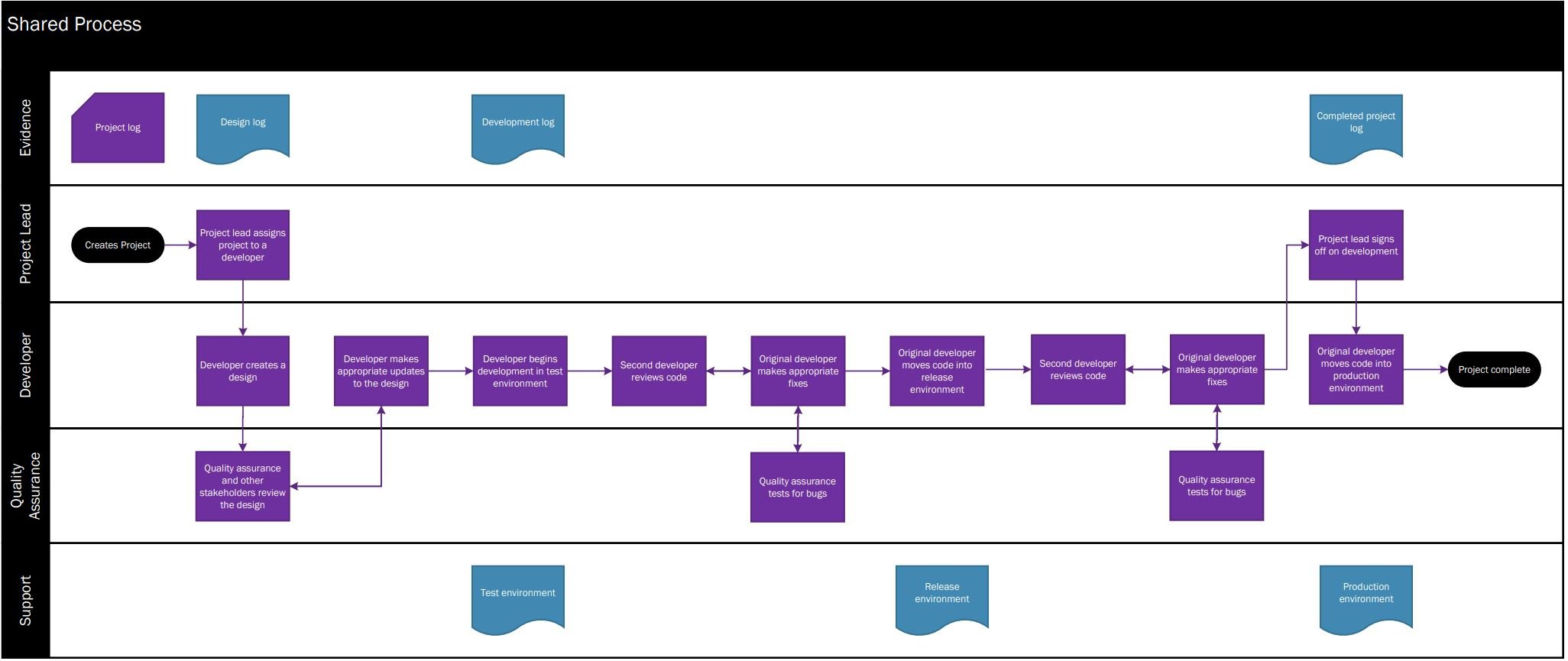Improved Development Documentation Interface
The old software development process left most quality testing the end, and once development reached testing, the project needed to go out by that release no matter what. This sometimes required developers to invest 60+ hours a week fixing bugs, many more bugs getting released, and additional development spent on cleaning up the messes.
To fix this chronic problem, leadership settled on a solution that would restructure the entire development process to include testing earlier and provide a way to back out if a project didn’t meet standards in time. This redesign would affect over 5000 employees across 4 main roles. I lead three of my colleagues
My Role
I developed the UX strategy for the development process overhaul and lead teammates in executing it according to project timelines.
Strategy
I partnered with project managers to determine what roles were affected, what questions most needed to be answered, and timeline projections that needed to be met.
Execution
I identified a variety of studies at each stage of development that would provide value such as A/B tests, surveys, card sorts, interviews, and usability testing. I worked with teammates to share in creation and facilitation of these studies.
My Role: UX Research Lead
Tasks: Recruitment, User Research, Analysis, Presentation
Tools: Paper prototype, proprietary test environment, SurveyMonkey, Post-its
Results
I presented my findings to the developers and project managers, sharing key findings and impacts. I collaborated with the team to identify which concerns needed to be addressed immediately, which could be deferred, and what additional research needed to be conducted based on findings.
Quality Assurance Notes
Project Logs
Technical Notes
Designs
Affected Document Interfaces
Development Logs
Kickoff
Understanding the Structure
We understood the back end structure that would allow developers to back out changes, but we needed to understand how the different roles currently operated so we could make it work for them on the front end as well.
Early Insights
Through interviews and card sorts, we discovered that across the company, different roles and different teams had drastically different processes, and some teams cared deeply about information others ignored. However, there seemed to be a 90% overlap in the core information and the order it was filled out. We had a good idea where to start. Or so we thought.
New Way to Report
With the new structure, it no longer made sense to write comprehensive logs documenting bugs that would be fixed the next day. But nobody could agree on what the new structure would look like. We would need to spend multiple rounds of usability testing on this alone. Rapid iteration would save the day, cutting down drastically on resources before the final round.
Coming Together
After months of research, we pulled together the results of every interview, survey, card sort, and usability test we had conducted into what we hope was going to be the way of the future for our development process. But while we felt confident that the individual pieces worked, it would all fall apart if they didn’t work together.
We had to recruit volunteers to work in developer/quality assurance pairs, passing a log back and forth through each stage, documenting each step along the way. With our remaining time limited, we had to conduct the sessions all at once, gathering eight people in a room together. To pull it off, all UX researchers banded together to help moderate this one big usability bash.
The Impact
Positive Results and More to Do
By bringing the most prominent tasks to the front and hiding the less common ones, we drastically cut down on the standard documentation time. Bug tracking especially suddenly took 1-3 minutes less time to each write and resolve within a project than they had before. We had successfully implemented the new structure while drastically reducing the busywork.
Since this project was still subject to the old process, there was only so much we were able to implement in time. We still came away with a lot of good information about what we could still improve. We especially resolved to continue improving workflows for roles downstream like technical writers that had been largely neglected by this core overhaul.







